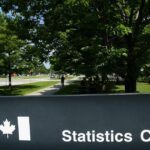Article – The story of Canada’s wealth gap is staring back at us in bold print, and the message isn’t pretty. The latest Statistics Canada report reveals what many Canadians have felt in their wallets for years—the rich are getting richer at a pace that leaves everyone else in the dust.
Let me put this in perspective. The wealthiest 1% of Canadians now earn more than 15% of all income in the country. That’s the highest concentration of wealth at the top since StatsCan began tracking these figures. And this isn’t just statistical noise—it represents a fundamental reshaping of our economic landscape.
Walking through Toronto’s diverse neighborhoods tells the tale more vividly than any spreadsheet. In Rosedale, luxury vehicles line the driveways of multi-million dollar homes. Just a few kilometers away in Regent Park, despite years of revitalization efforts, families stretch every dollar to cover basics.
“We’re seeing a return to Gilded Age levels of inequality,” explains Dr. Evelyn Richardson, economist at the University of Toronto. “The gap between the top earners and the median Canadian worker has essentially doubled since the early 1980s.”
What’s driving this widening chasm? Multiple forces are at work simultaneously. The knowledge economy rewards specialized skills with premium wages while automation hollows out middle-skill jobs. Meanwhile, capital gains—which disproportionately benefit wealthy Canadians—continue to receive preferential tax treatment compared to employment income.
The pandemic accelerated these trends. While professional workers adapted to remote arrangements and saw their investment portfolios soar, service workers faced layoffs and reduced hours. Housing costs exploded, benefiting those who already owned property while pushing homeownership further out of reach for many.
Bank of Canada data shows that the bottom 40% of Canadian households hold just 1.2% of the nation’s wealth. Their debts often exceed their assets. In contrast, the top 20% control nearly 70% of total wealth.
“When we talk about inequality, we need to consider both income and wealth,” says Michael Thomson, senior policy advisor at the Canadian Centre for Policy Alternatives. “Even when income mobility exists, wealth accumulation has become increasingly concentrated among those already at the top.”
The consequences reach beyond economic statistics. Research published in the Canadian Medical Association Journal demonstrates that income inequality correlates with poorer health outcomes across populations. Communities with greater inequality show higher rates of mental health challenges and shorter life expectancies.
“Economic inequality creates social distance,” notes Dr. Sonia Dhaliwal, sociologist at York University. “It erodes the sense that we’re all in this together, which undermines social cohesion and democratic participation.”
Some business leaders argue that inequality reflects natural market outcomes that reward innovation and risk-taking. Christopher Reynolds, CEO of Frontier Capital, suggests that “focusing too heavily on redistribution could hamper growth that ultimately benefits everyone.”
However, evidence from the Organisation for Economic Co-operation and Development (OECD) challenges this narrative. Their analysis indicates that excessive inequality actually stunts economic growth by limiting human capital development among lower-income populations.
The federal government has implemented some measures aimed at addressing inequality, including the Canada Child Benefit and adjustments to tax brackets. Yet critics across the political spectrum question whether these efforts match the scale of the challenge.
Provincial responses vary dramatically. British Columbia has introduced speculation taxes targeting property investors, while Alberta has maintained a flat tax rate that critics argue benefits higher earners.
What solutions might actually move the needle? International examples offer some guidance. Countries with lower inequality typically feature robust public services, progressive taxation, and policies that strengthen labor’s bargaining power.
“The Nordic countries demonstrate that competitive economies can coexist with narrower income distributions,” explains Dr. Richardson. “Their approach combines market freedom with substantial social investments.”
For ordinary Canadians caught in this economic divergence, the path forward isn’t clearly marked. Financial advisors recommend investing early and consistently—even small amounts—to benefit from compound growth. Education remains a relatively reliable path to higher earnings, though rising tuition costs present their own accessibility challenges.
Community-based initiatives are emerging to address gaps left by market forces and government policy. Credit unions in Manitoba have pioneered microfinance programs for entrepreneurs excluded from traditional banking. Housing cooperatives in Quebec offer stability outside the speculative market.
As Canada grapples with record inequality, the question becomes not just economic but existential: what kind of society do we want to build? The answer will shape not only income distributions but the fundamental character of Canadian life for generations to come.
The statistics tell one story. The lived experience of Canadians tells another. Somewhere between the cold numbers and warm realities lies a path toward an economy that works better for everyone—if we choose to find it.






